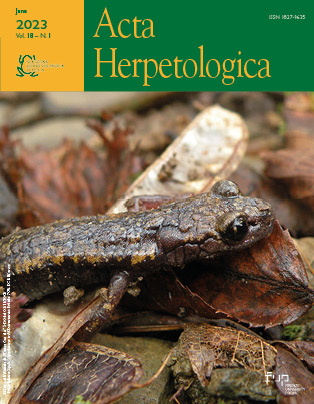Diet and trophic niche overlap of four syntopic species of Physalaemus (Anura: Leptodactylidae) in southern Brazil
Published 2023-07-01
Keywords
- Foraging,
- trophic niche,
- amphibians,
- behavior
How to Cite
Copyright (c) 2023 Renata Farina, Camila Moser, Stefano Scali, Mateus Oliveira, Patricia Witt, Alexandro Marques Tozetti

This work is licensed under a Creative Commons Attribution 4.0 International License.
Abstract
Despite the current increase in studies on the diet of neotropical anurans, few of them take a comparative approach between syntopic species. The objective of this study was to compare the diet of four syntopic species of the genus Physalaemus. The collections occurred between November 2014 and January 2016 in a preserved area of the subtropical Atlantic Forest in southern Brazil. We compared the gastrointestinal content of 109 individuals distributed in the species Physalaemus biligonigerus, P. cuvieri, P. gracilis and P. henselii. We measured the Index of Relative Importance of each prey category and calculated trophic niche breadth using the Levins’ index (Bsta) and trophic niche overlap using the Pianka’s index (Ojk). We also applied compositional analysis to evaluate feeding specializations. Formicidae was the most important prey category for P. biligonigerus (IRI = 88.5%) and P. gracilis (IRI = 39.1%). For P. henselii and P. cuvieri, the most important category was Isopoda (IRI = 51.7% and 57.9%, respectively), followed by Formicidae (IRI = 34.9% and 24.8%). Isopoda was also important in the diet of P. gracilis (IIR = 28.6%), followed by Araneae (IIR = 22.6%). The trophic niche breadth of the four species was narrow, all smaller than 0.32, and the lowest was recorded for P. biligonigerus (0.04). The trophic niche overlap was higher between P. biligonigerus and P. cuvieri (96%), and between P. gracilis and P. henselii (95%). Only P. gracilis presented a significant level of feeding specialization. The differences in their diets suggest different uses of the resources, which could relate to different ways of exploring the microhabitat.





